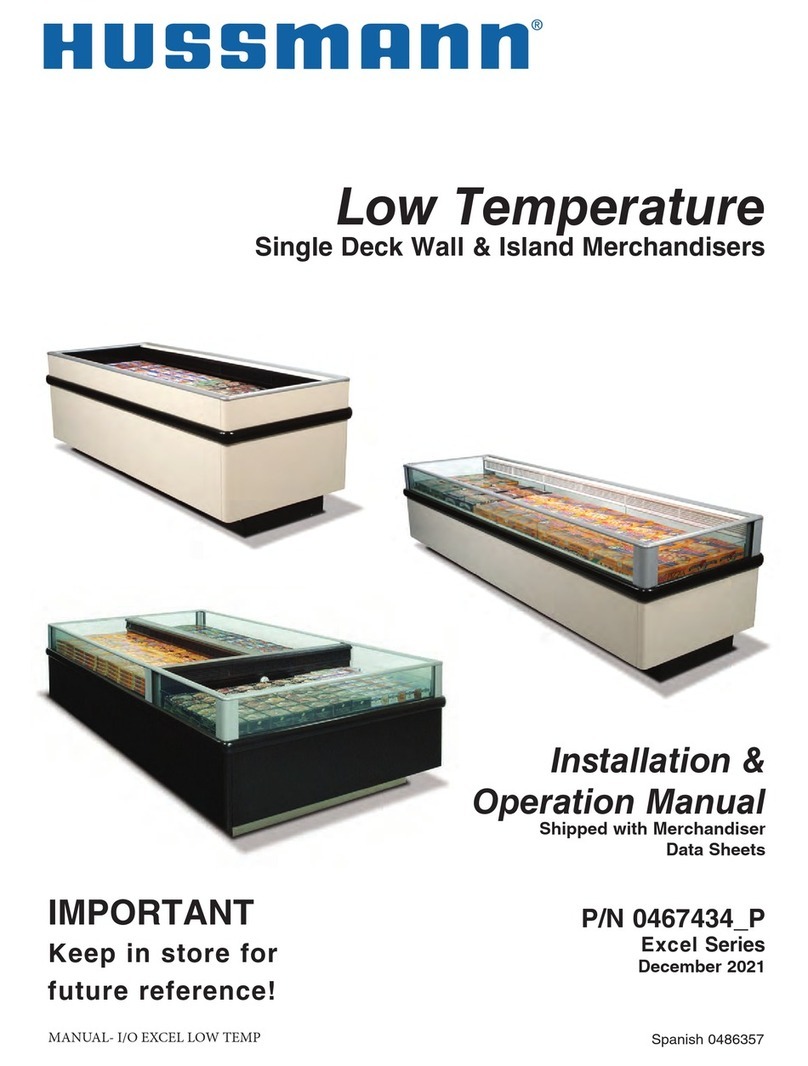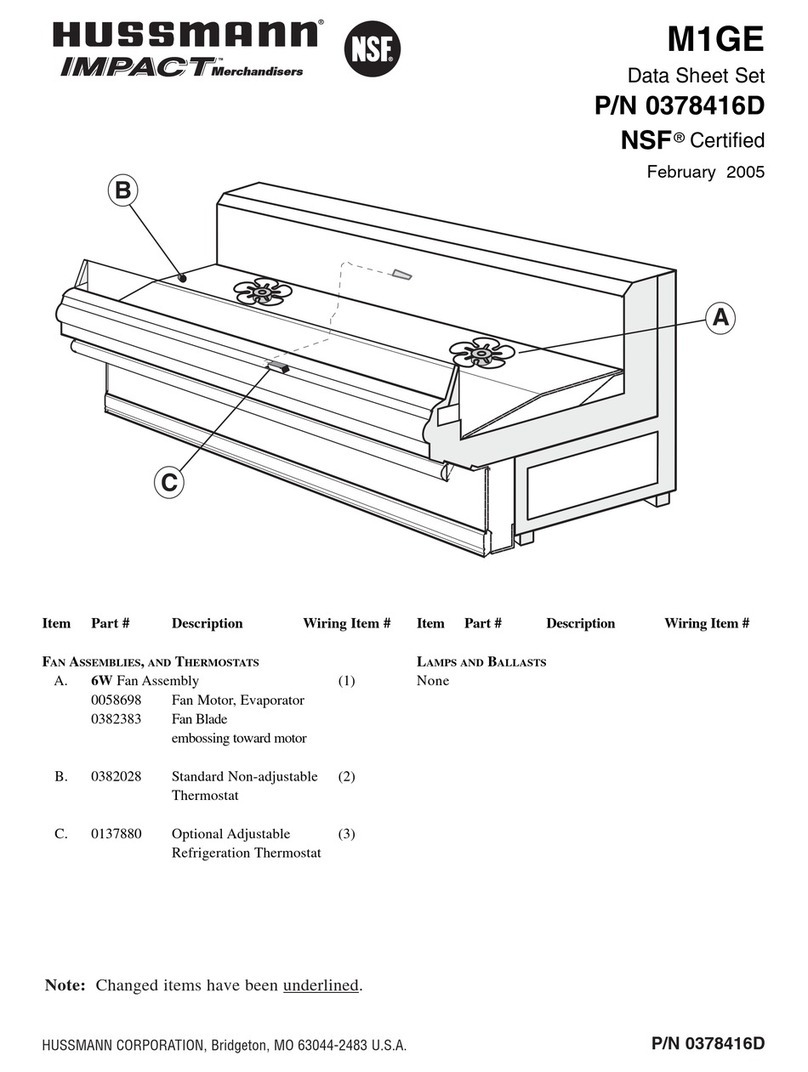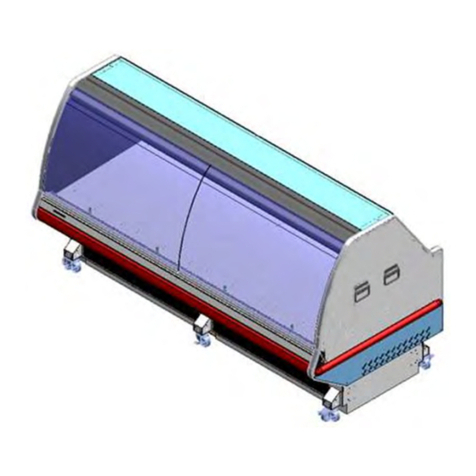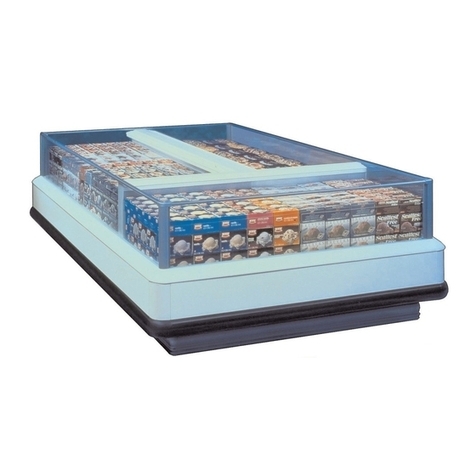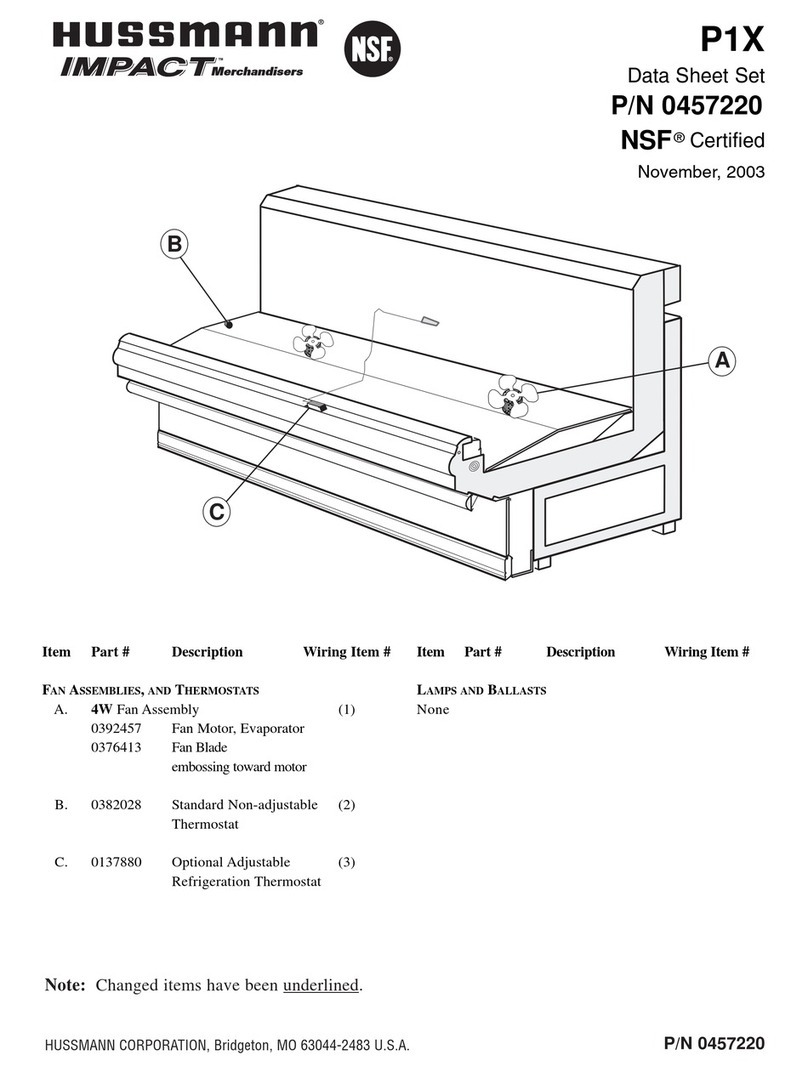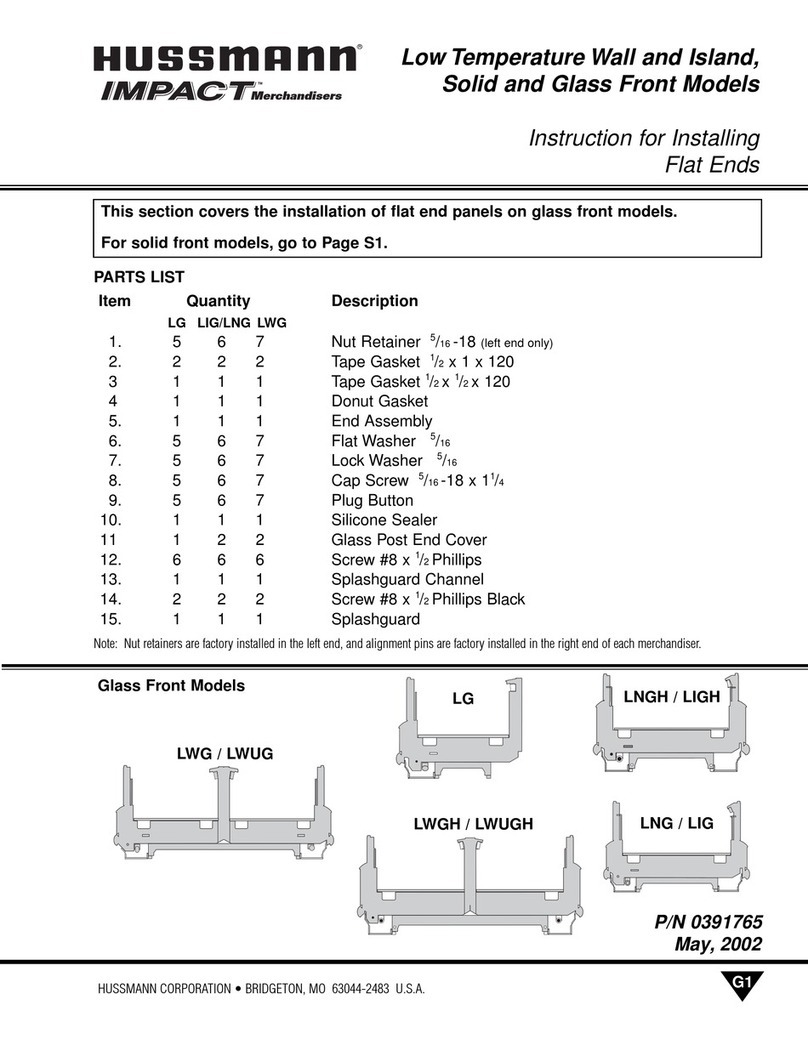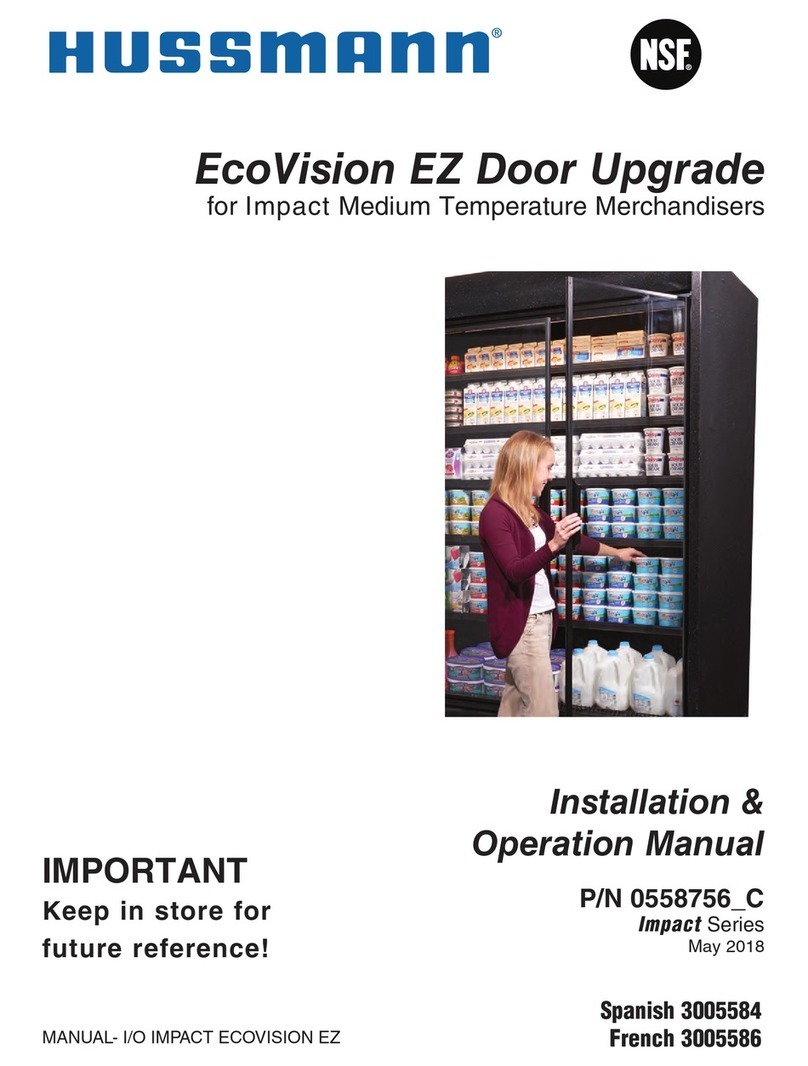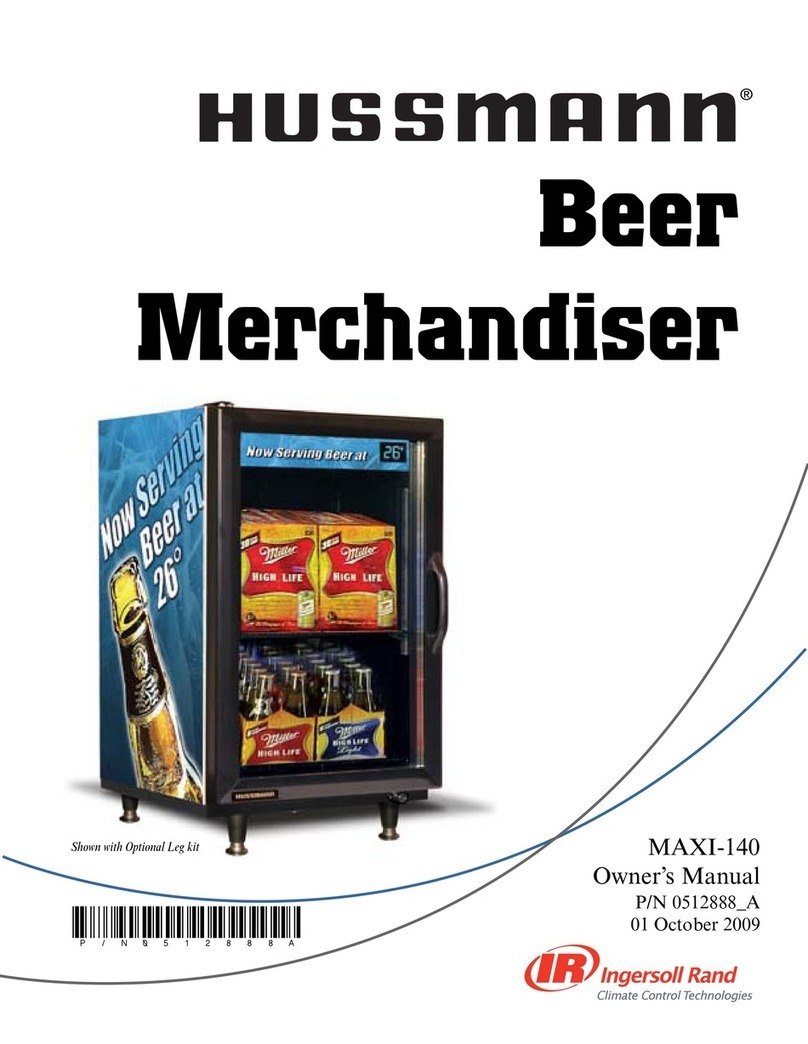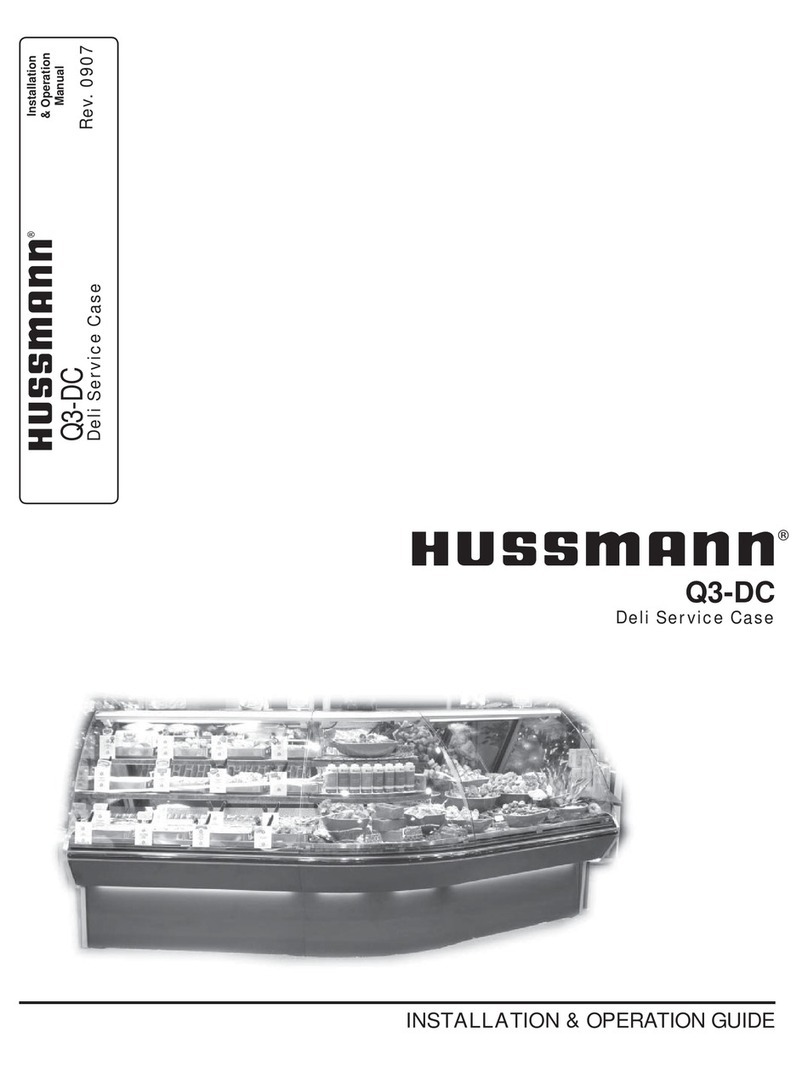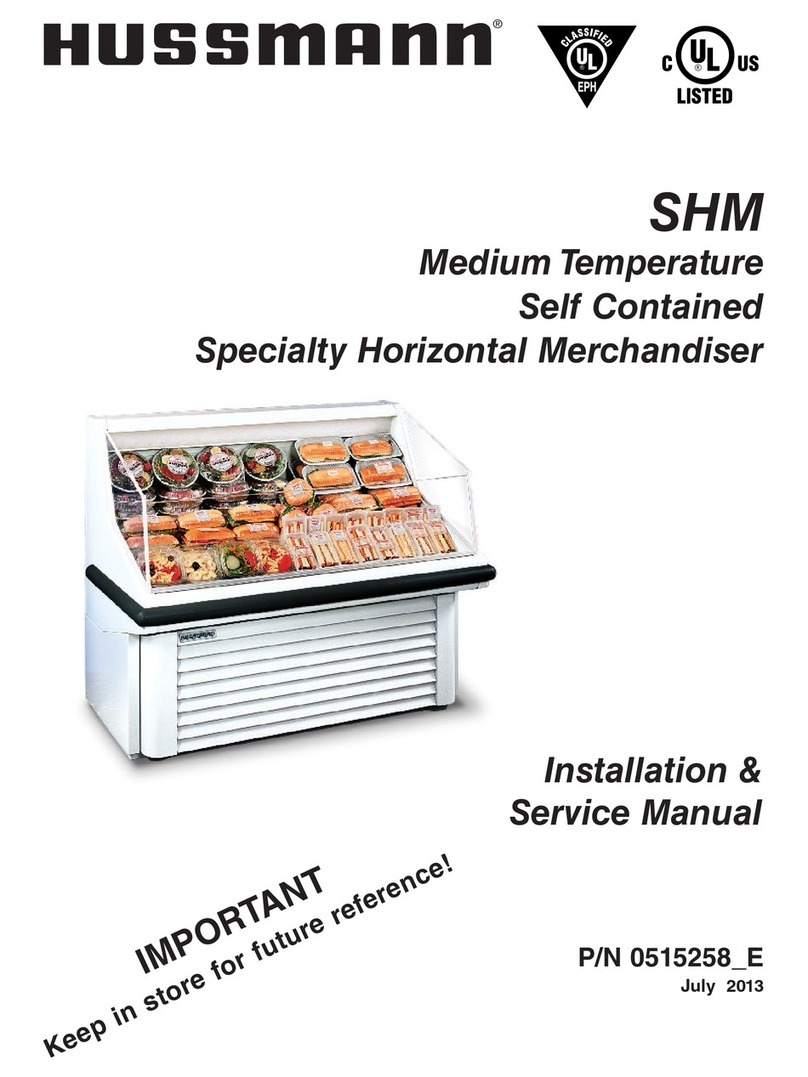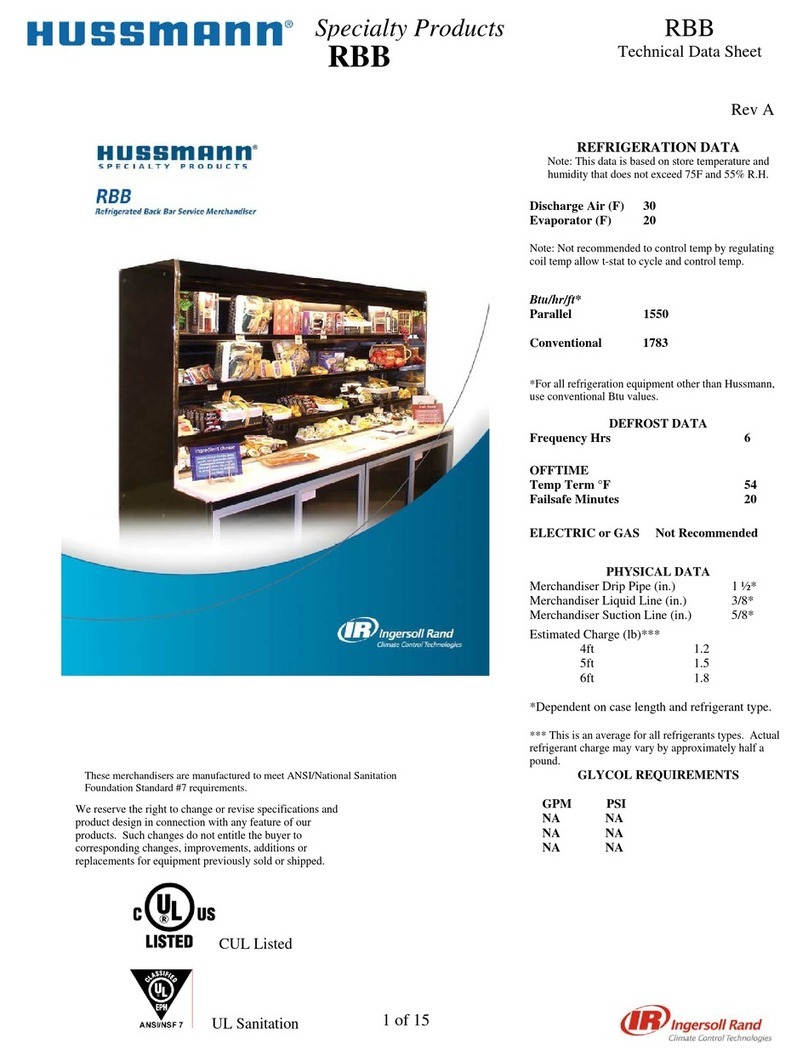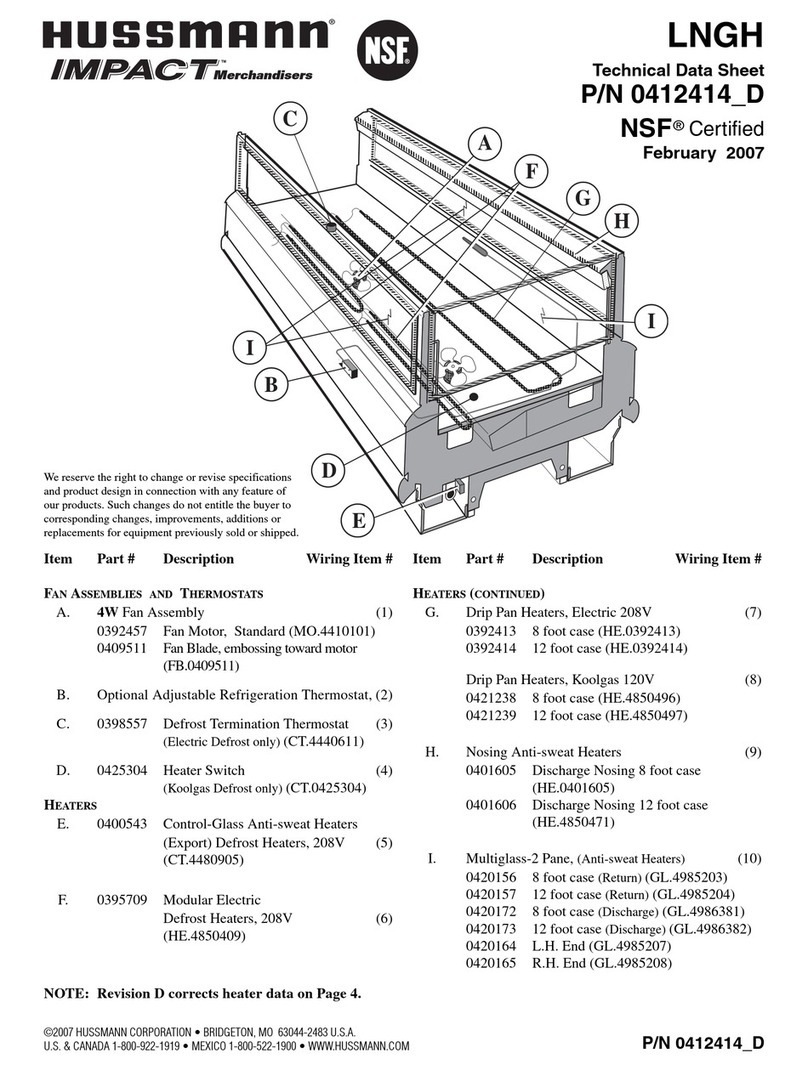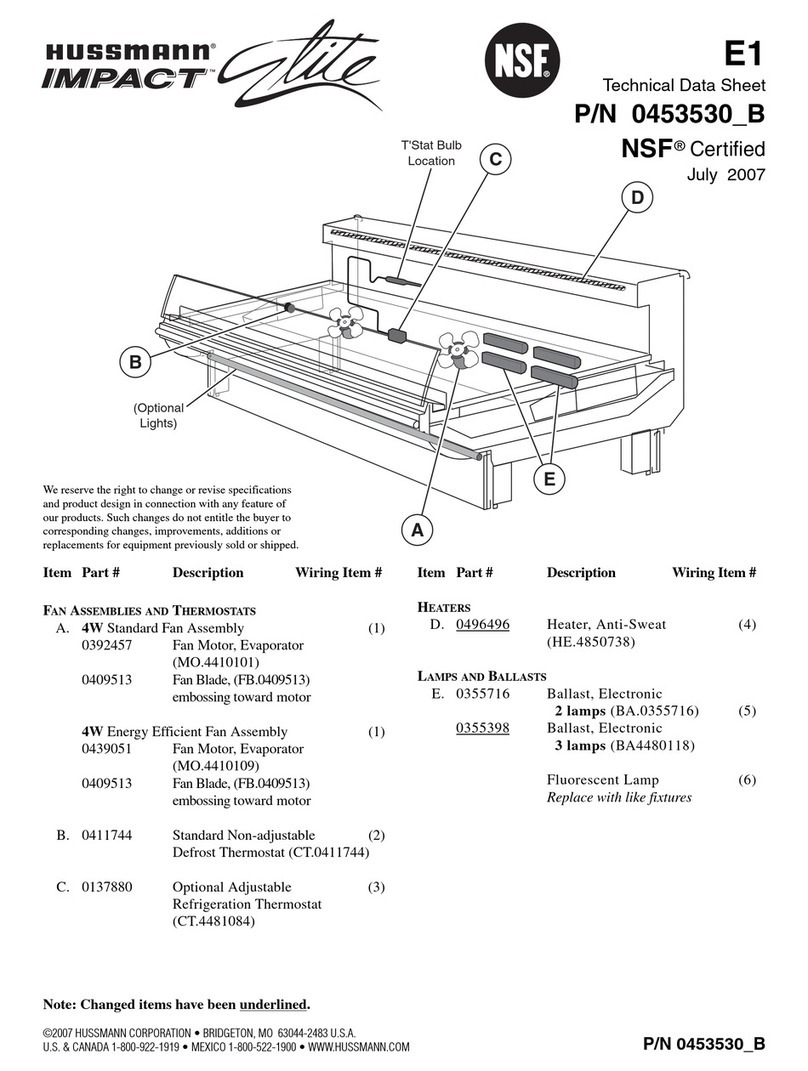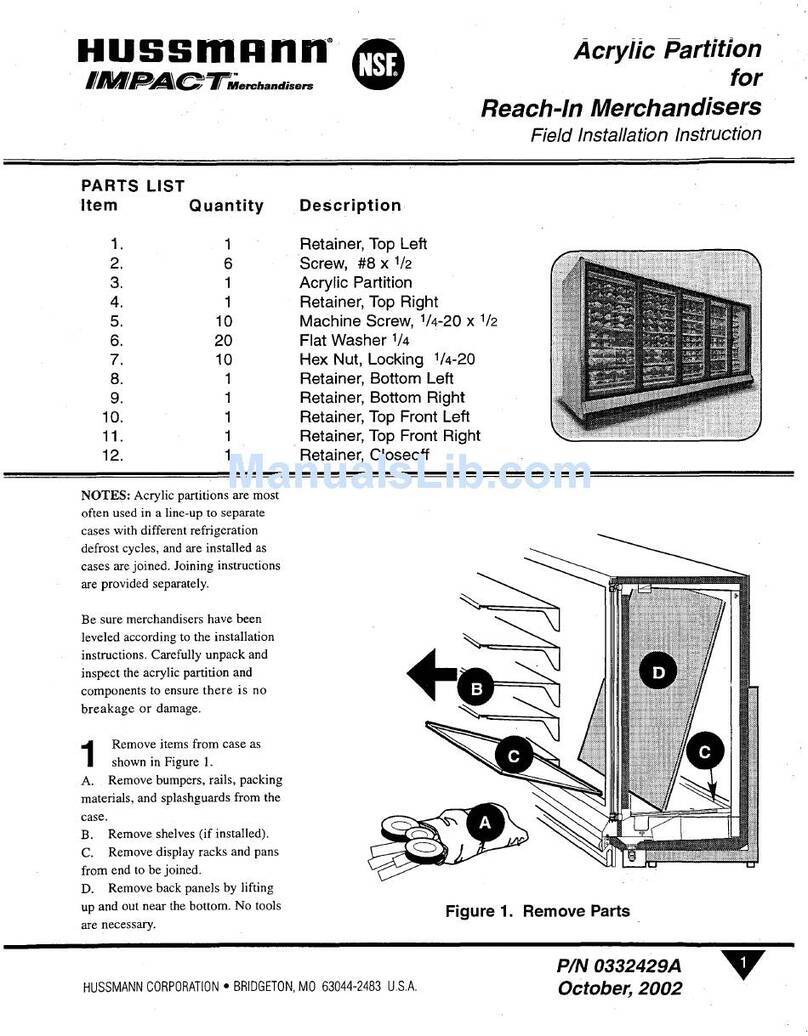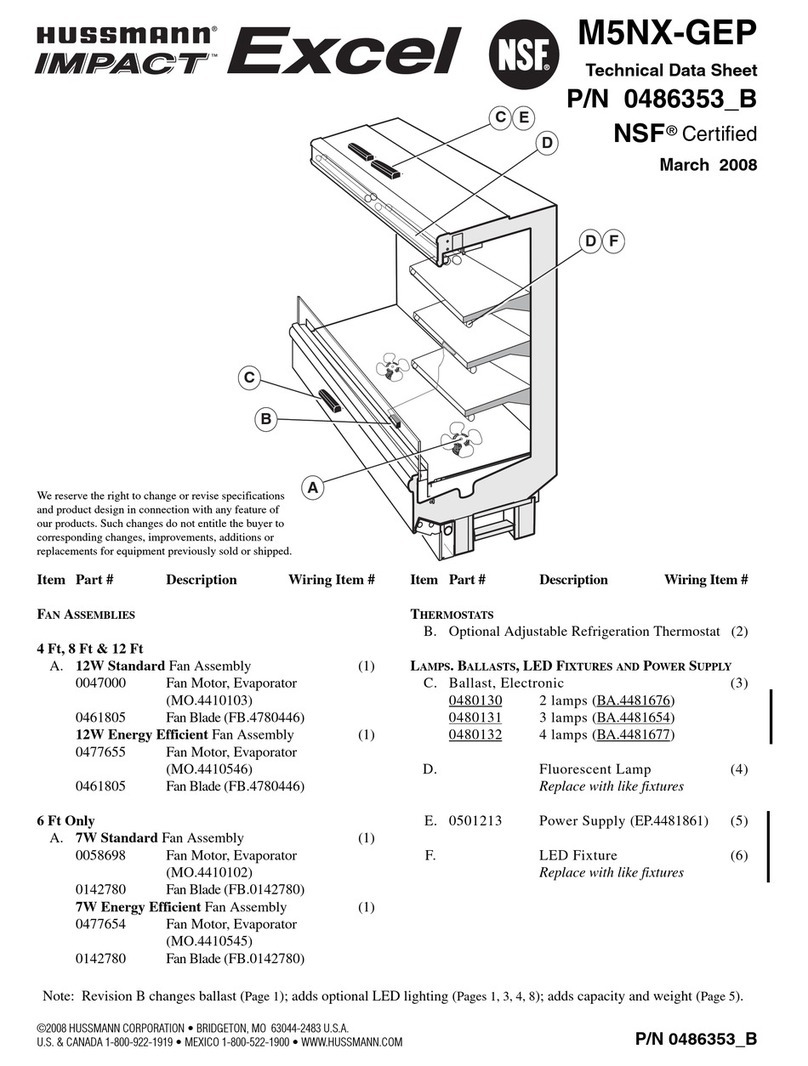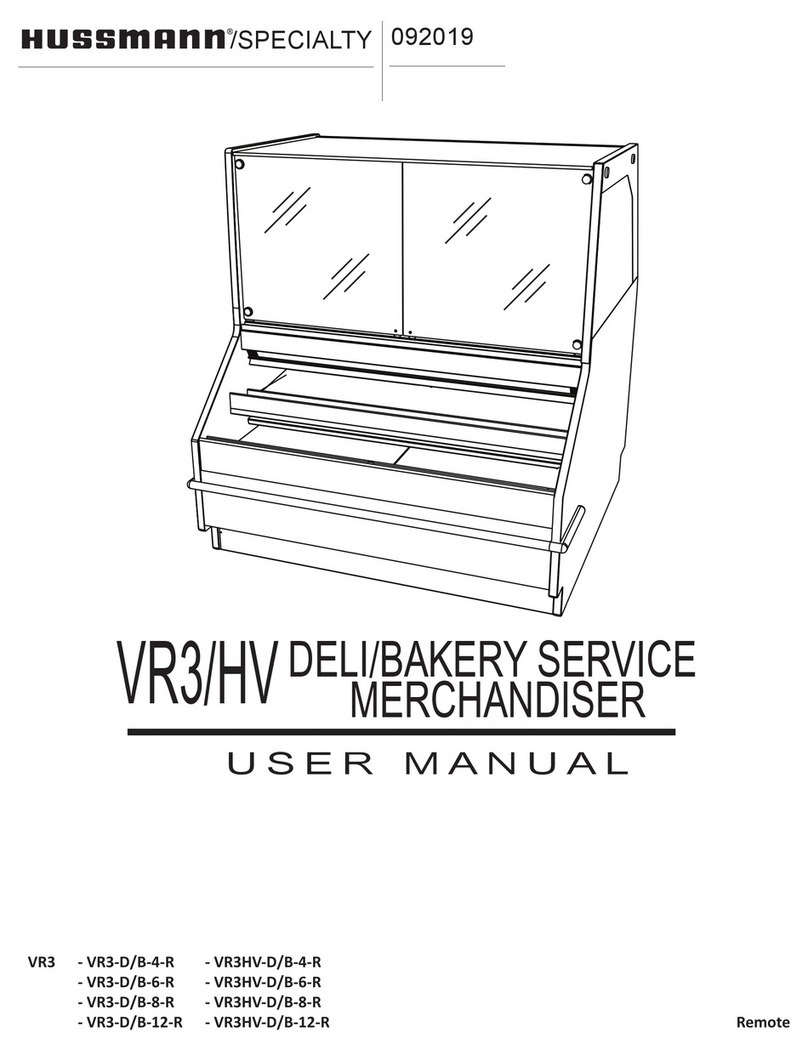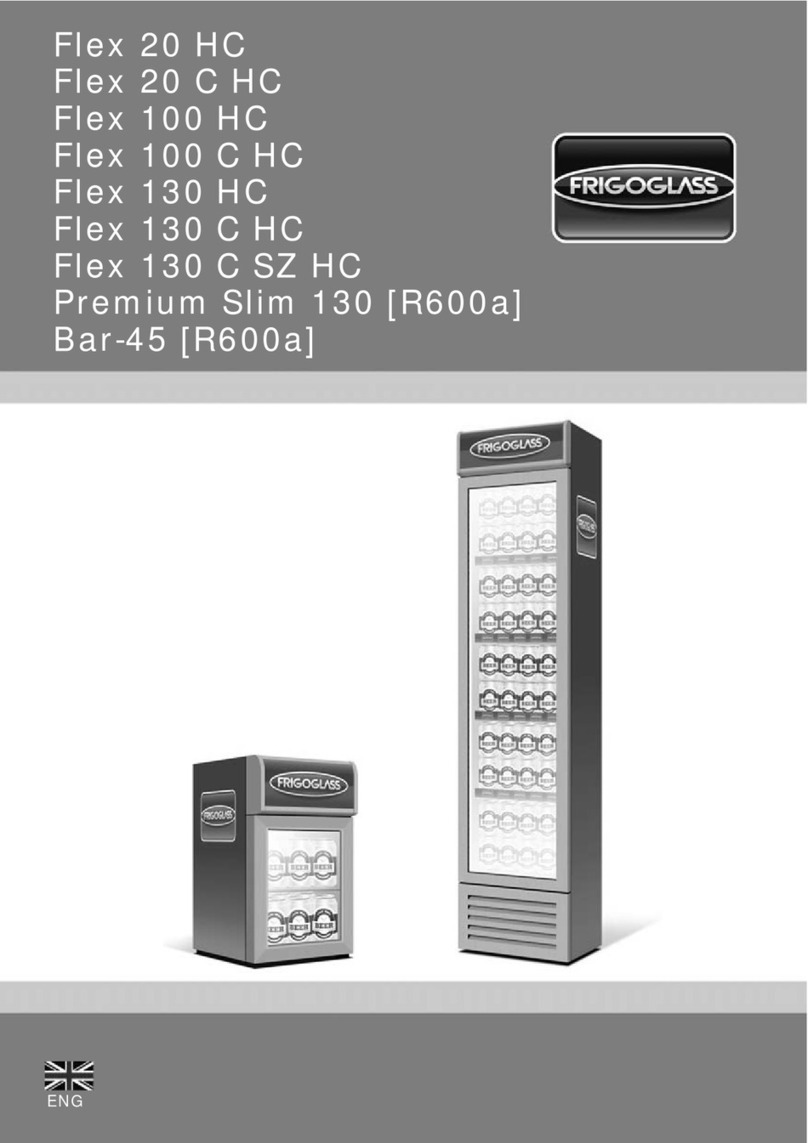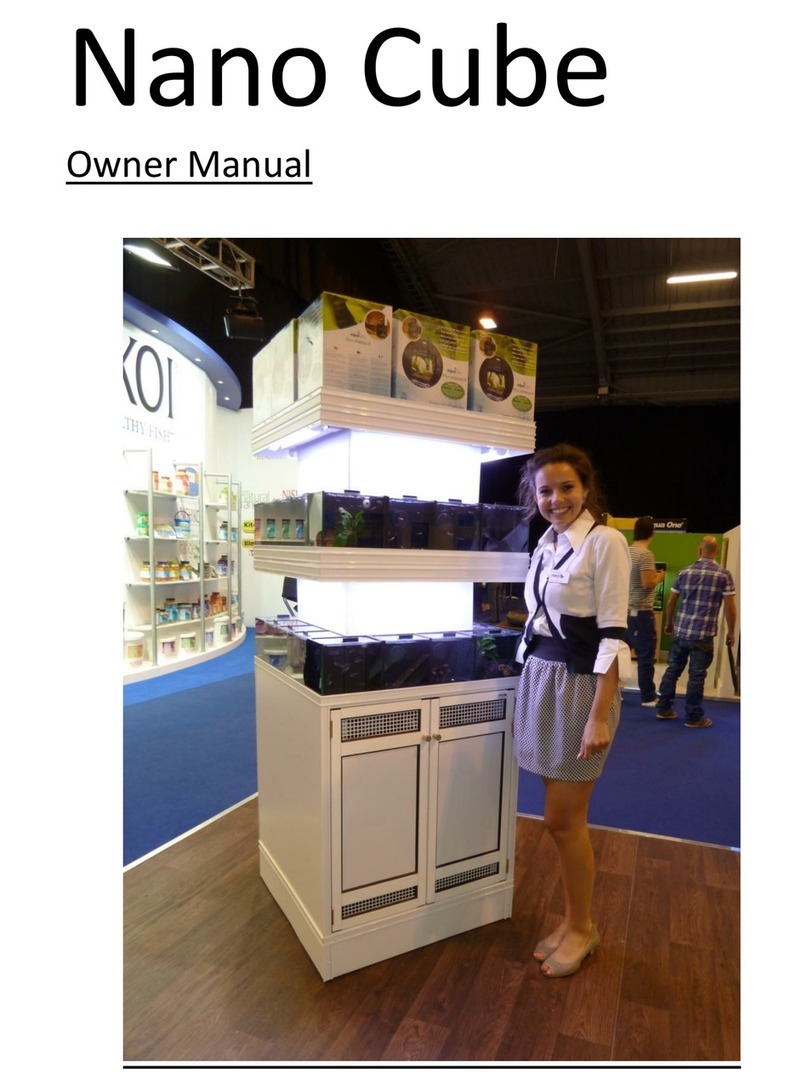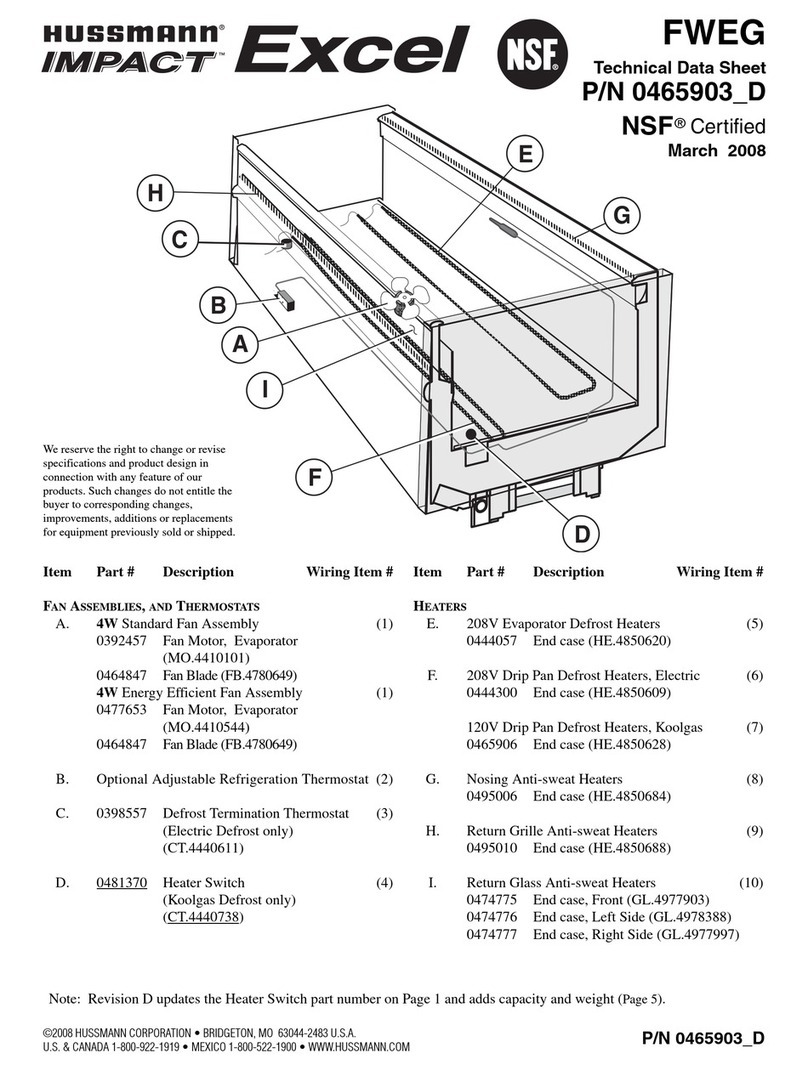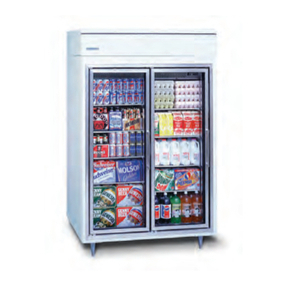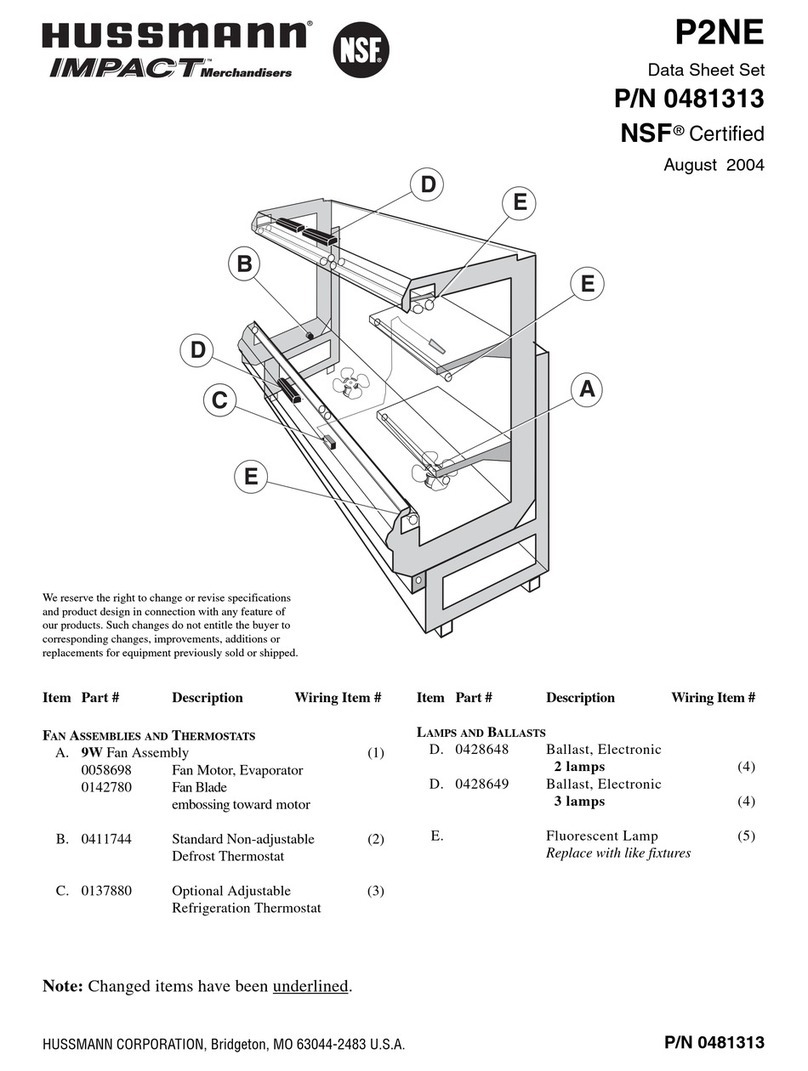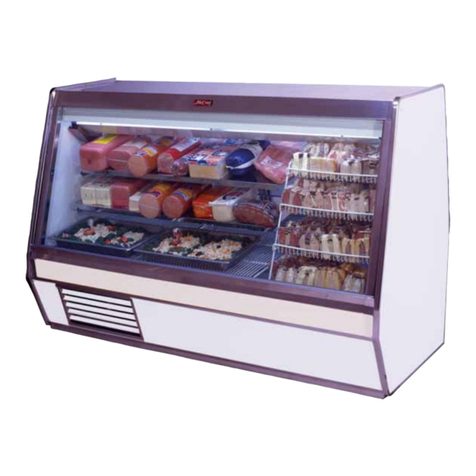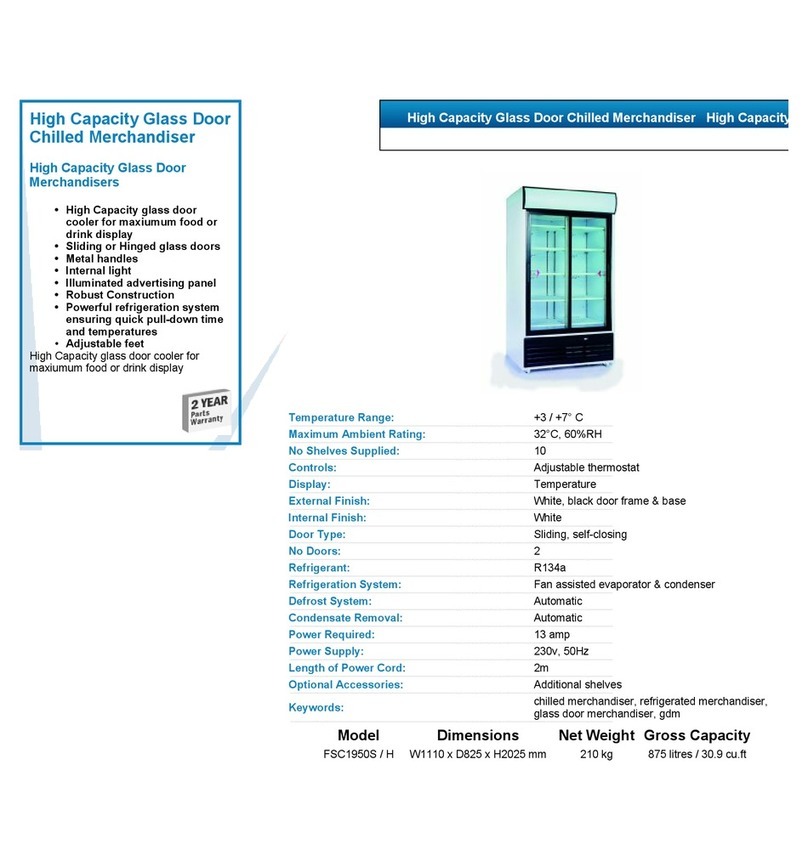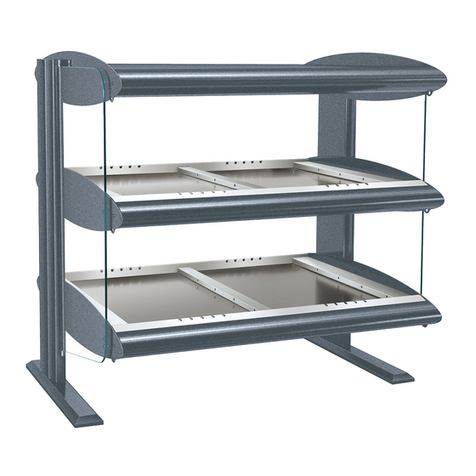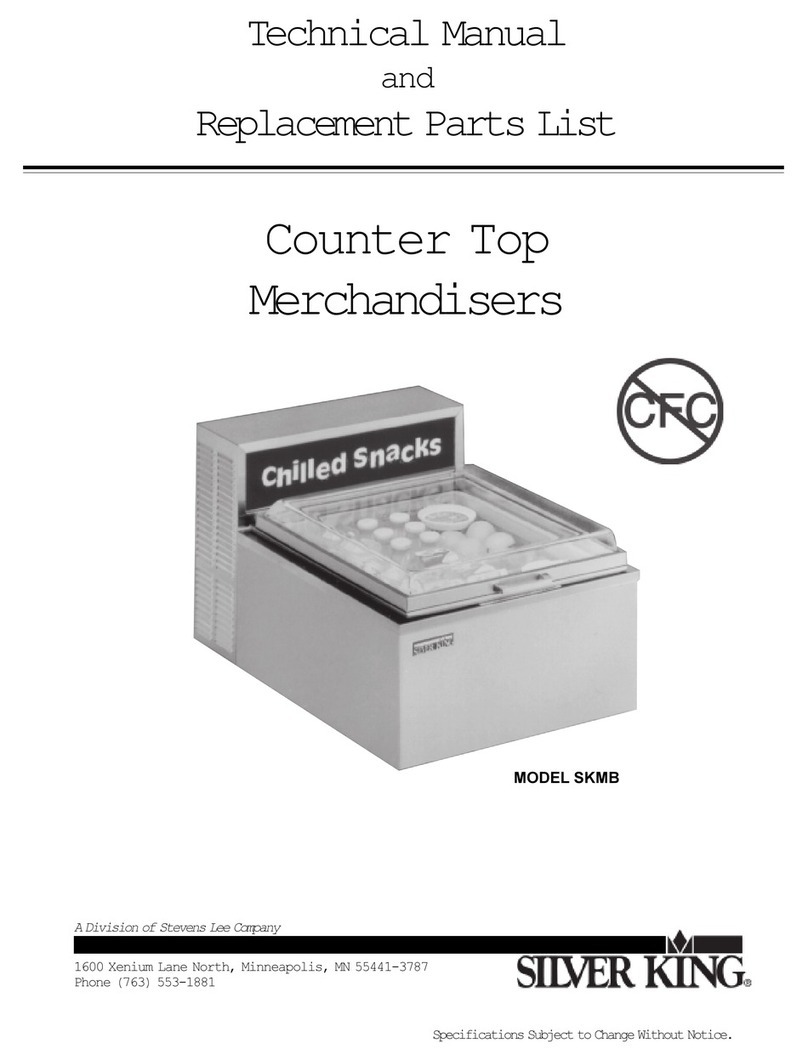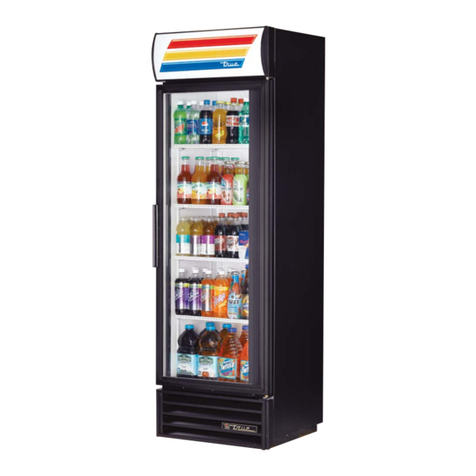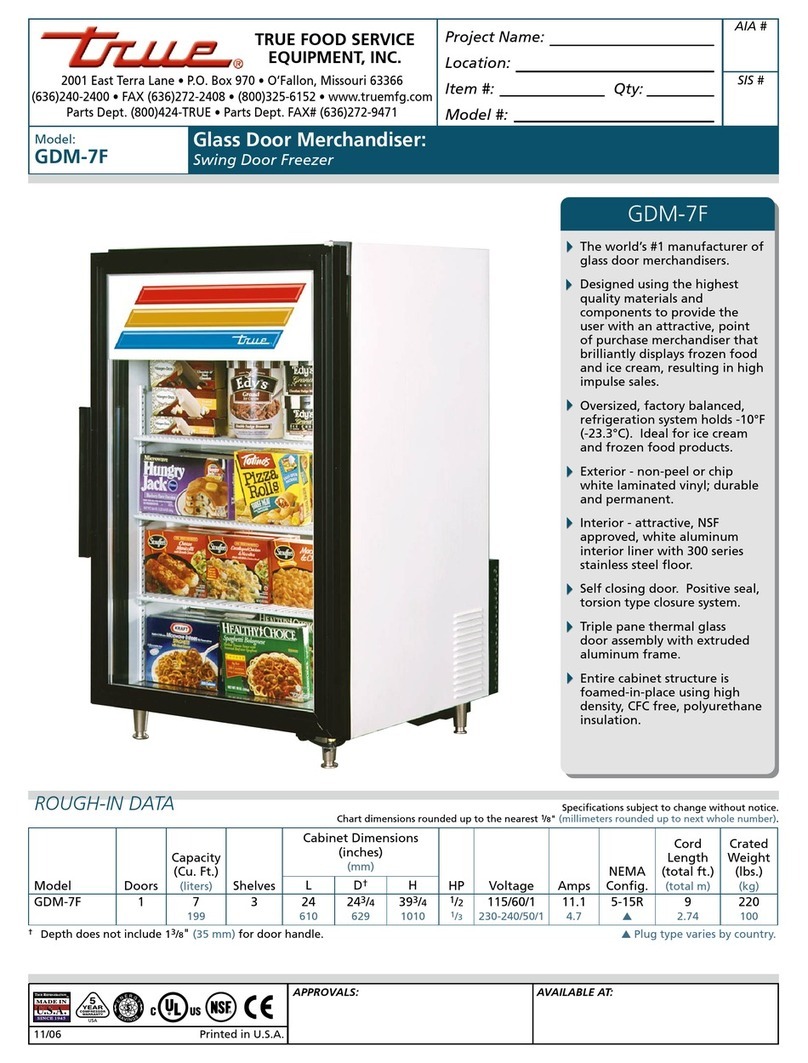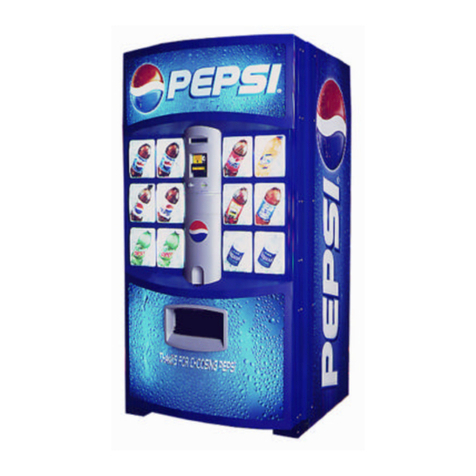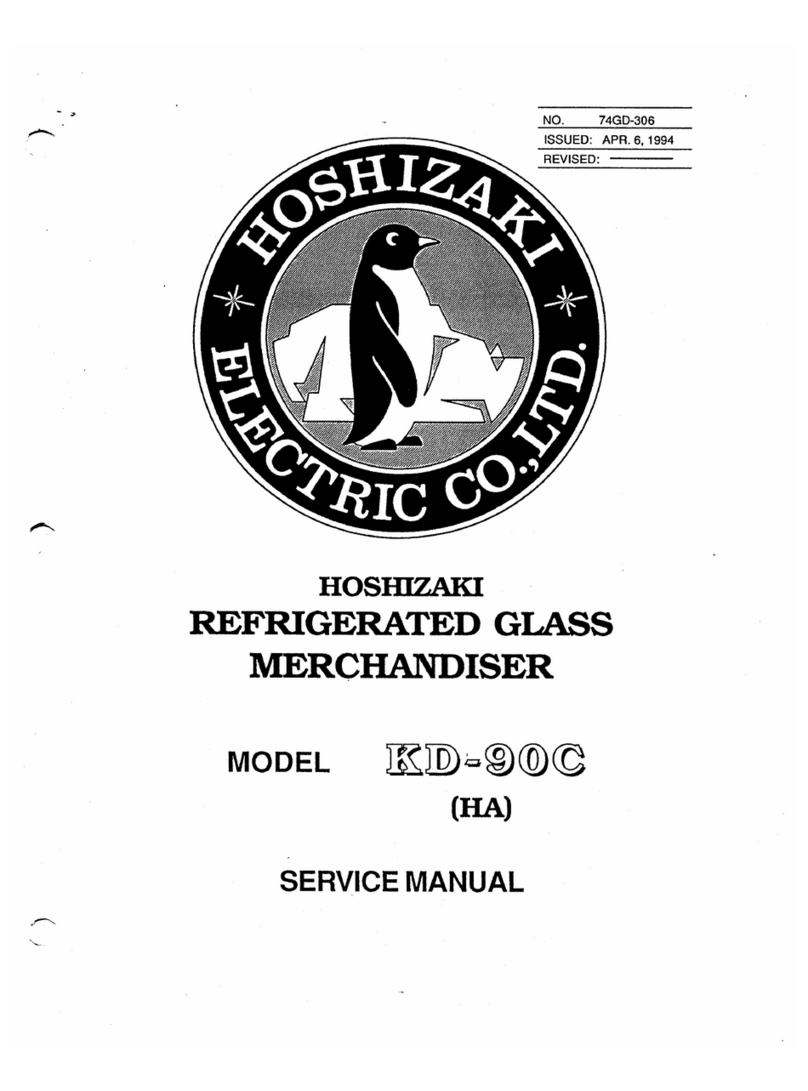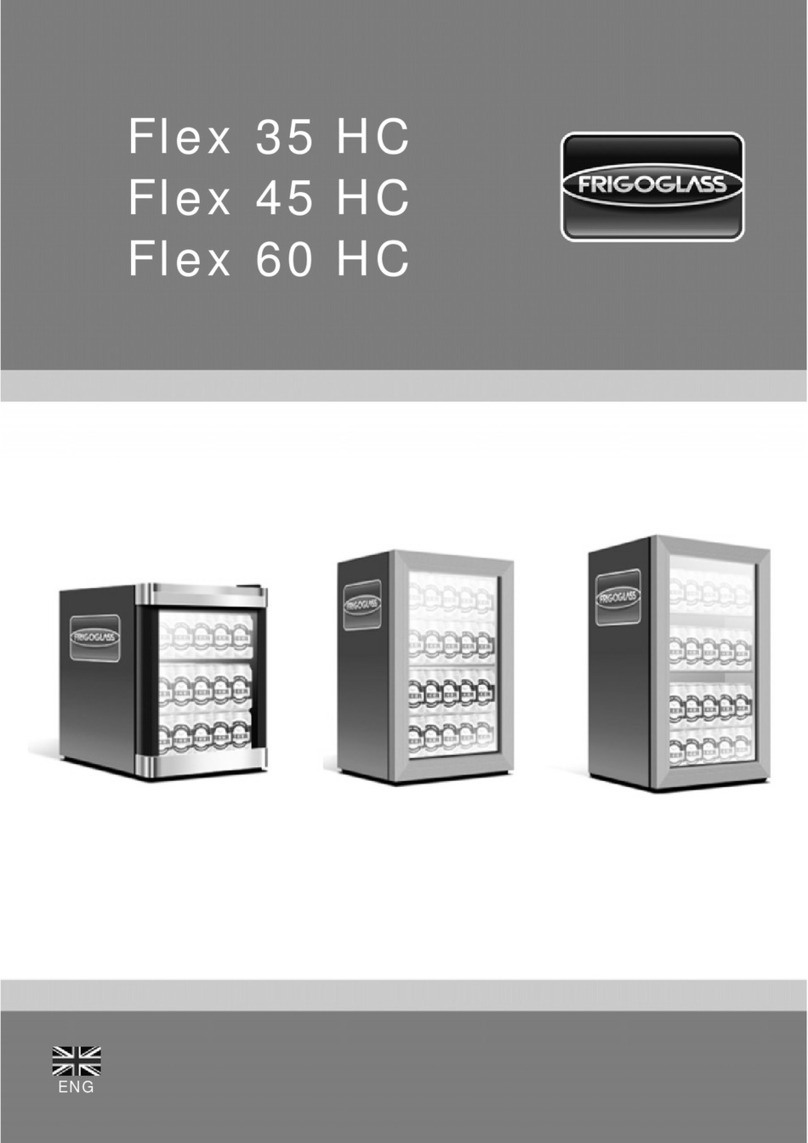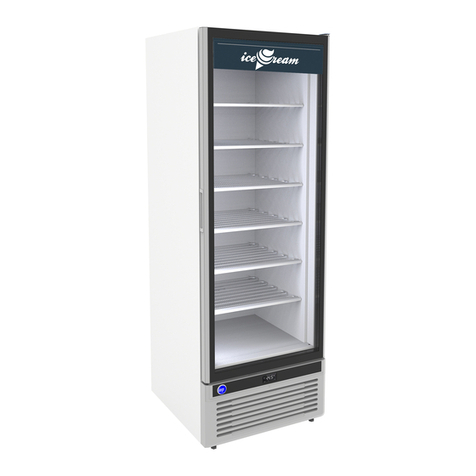
IGSS-ESS/ESSS-0303
10
dehydrationprocess.The only othermoisture
within the case is thatin the product itself. A single
levelof meat will dry out fasterthan a fullyloaded
caseof 3–4 levels of meat.
IMPORTANT STEPS
1. Donot set temperaturetoo cold,as thiscauses
product dehydration.ProductTemperature:
33°–35°!
Setthermostat to cut in at 28° discharge air.Meat
holdingbox:32°.Meatpreproom:55°.Meat bloom
box:36°.
Processthemeat to enter case at 40° or below.
Productdeteriorationis very rapid above 40°.
2. Temperaturecontrolshould be bymeans of aT-Stat
andSuction Stop Solenoid at each case.Do not use
EPRvalves,LiquidLine Solenoids or electronic
controldevicesofanykind,asthese allowtempera-
tureswingscausing dehydration and excessive
energy consumption.
3. Productshouldbe workedand rotatedon a regular
basis,not to exceed a4-hour period.
4. Atnight,turn off case lights and coverthe product
witha damp (not wet)cloth similar to cheese cloth
(etc.).Thisshould be washed out in the morning and
kept in awalk-inboxduring the day—sothat it is
cooland moist when coveringthe product.
5. Dischargeair temperatureshould be approximately
26°F,with between150-200 FPM air velocity.Donot
displayproductdirectlywithinthe air discharge.
6. CleanHumidity system a minimumof every 90 days
forpropersystem operation.
CASE CLEANING
Long life and satisfactory performance of any equipment
aredependentupon the caregivento it.Toinsurelong life,
proper sanitation and minimum maintenance costs, the
refrigerator shouldbethoroughlycleanedfrequently.SHUT
OFF FAN DURING CLEANING PROCESS.It can be un-
plugged within the case,or shut off case at the source.The
interior bottom may be cleaned with any domestic soap
or detergent based cleaners. Sanitizing solutions will not
harmthe interior bottom,however,these solutions should
always be usedaccordingto the manufacturer’sdirections.
Itis essentialto establish andregulatecleaningprocedures.
This will minimize bacteria causing discoloration which
leads to degraded product appearance and signifigantly
shortening product shelf life.
Soap and hot water are not enough to kill this bacteria. A
sanitizing solution must be included with each cleaning pro-
cess to eliminate this bacteria.
1. Scrubthoroughly,cleaningall surfaces,with soapand
hotwater.
2. Rinsewith hot water,but do not flood.
3. Applythe sanitizing solution accordingtothe
manufacturer’sdirections.
4. Rinsethoroughly.
5. Drycompletely beforeresumingoperation.
CLEANING GLASS & MIRRORS
Only use a soft cloth and mild glass cleaner for cleaning
any glass or mirrored components.Be sure to rinse and/
or dry completely.
Never use hot water on cold glass surfaces! It
may shatter and cause serious injury! Allow glass
surfaces to warm first.
CLEANING PRECAUTIONS
WHEN CLEANING:
• DO NOT USE HIGH PRESSURE WATER HOSES
• DO NOT INTRODUCE WATER FASTER THAN WASTE OUTLET CAN DRAIN
• NEVER ON A SELF CONTAINED UNIT WITH AN EVAPORATOR FAN
• NEVER USE A CLEANING OR SANITIZING SOLUTION THAT HAS AN OIL
BASE (these will dissolve the butyl sealants) or an AMMONIA BASE
(this will corrode the copper componets of the case)
TO PRESERVE THE ATTRACTIVE FINISH:
• DO USE WATER AND A MILD DETERGENT FOR THE EXTERIOR ONLY
• DO NOT USE ABRASIVES OR STEEL WOOL SCOURING PADS
(these will mar the finish)
PLEXIGLASS & ACRYLIC CARE
CLEANING
Clean with plenty of nonabrasive soap (or detergent) and
luke warm water,using the bare hand to feel and dislodge
any caked-on dirt.A soft,grit-free cloth,sponge or cham-
ois may be used,but only as a means of carrying the water
to the plastic. Dry with a clean damp chamois or clean
soft cloth such as cotton flannel. Hard, rough cloths or
paper towels will scratch the acrylic and should not be
used.
WAXING
If after removing dirt and grease,the acrylic can be waxed
with a good grade commercial wax.This will improve the
appearanceof thesurface byfillinginmost minorscratches.
Wax should be applied in a thin even coat and brought to
a high polish by rubbing lightly with a dry clean soft cloth,
such as a cotton flannel. Excessive rubbing may cause
scratching and/or buildup an electrostatic charge which
